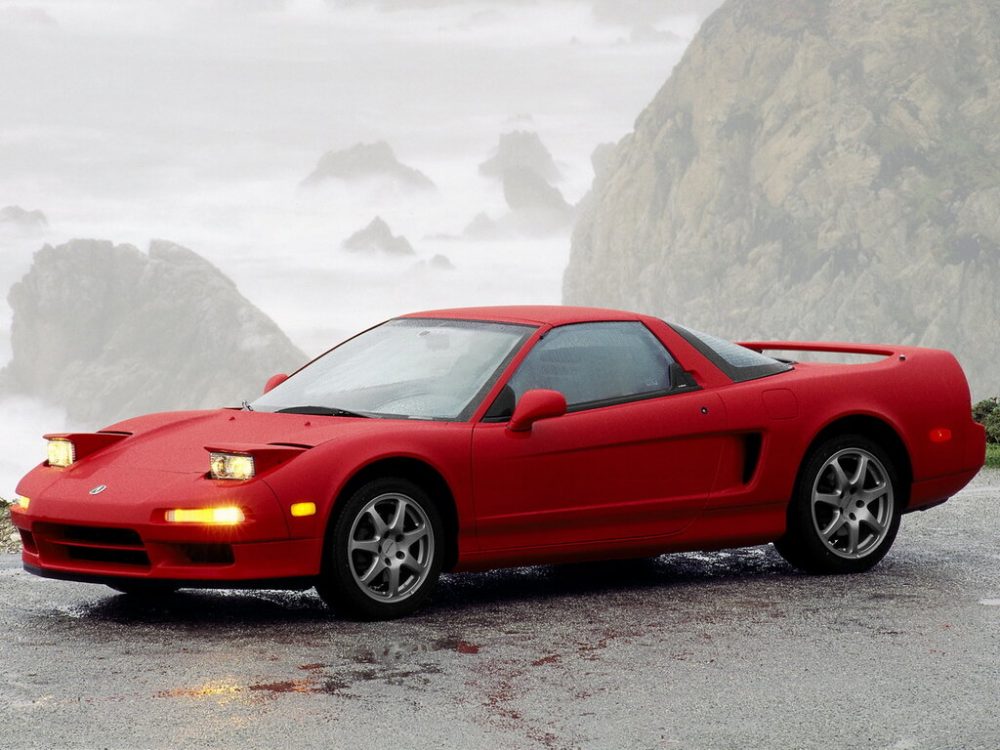February 1989 marked a pivotal moment in automotive history when Honda unleashed the Acura NSX. This mid-engine masterpiece didn’t just challenge European supremacy – it rewrote the rules of what a supercar could be. Breaking away from the temperamental nature of exotic cars, the NSX brought reliability and usability to a segment known for compromise.
Engineers at Honda took the bold step of crafting an all-aluminum chassis when steel dominated the industry. This groundbreaking decision launched a new era of lightweight performance cars, proving that supercars didn’t need to sacrifice daily drivability for speed.
Engineering Redefined
The NSX’s aluminum monocoque chassis wasn’t just lighter – it was revolutionary. By shaving off 200 kilograms compared to traditional steel construction, Honda’s engineers achieved an ideal power-to-weight ratio while maintaining exceptional structural rigidity. Every weld and joint underwent meticulous inspection, setting new standards for production car manufacturing.
Precision engineering extended to every component. The suspension geometry, fine-tuned through countless hours of testing, delivered a ride that was both responsive and forgiving. This dual-personality became the NSX’s signature trait.
“After owning multiple Ferraris, the NSX was a revelation. It offered the same thrills but could be driven every day without worry. The engineering quality is simply outstanding.” – Michael Chen, NSX Owner since 1992
The heart of the NSX began as a 3.0-liter V6 producing 270 horsepower, later evolving into a more potent 3.2-liter unit with 290 horsepower. Honda’s VTEC technology showed that high-revving naturally aspirated engines could deliver both excitement and reliability.
The powertrain integration showcased Honda’s racing DNA. A titanium connecting rod here, a perfectly balanced crankshaft there – each component served a purpose without excess.
Performance Without Compromise
Launch the NSX hard, and 60 mph arrives in just 5 seconds. But raw numbers tell only part of the story. The real magic lies in how the car delivers its performance – with precision and predictability that rewards skilled drivers while remaining accessible to newcomers.
The mid-engine layout, often challenging to master in other supercars, feels natural in the NSX. Credit goes to countless development hours spent with Formula One champion Ayrton Senna, who helped fine-tune the chassis dynamics.
Key performance highlights include:
- 8000 rpm redline delivering linear power delivery;
- near-perfect 42:58 front/rear weight distribution;
- double-wishbone suspension at all four corners;
- direct, unassisted steering at speed for maximum feedback.
Most importantly, the NSX delivered these capabilities without requiring specialized maintenance or experiencing the reliability issues that plagued its European rivals.
Design Philosophy
Chief designer Ken Okuyama crafted a shape that balanced form and function. The low nose, cab-forward design, and smooth surfaces weren’t just aesthetically pleasing – they helped the NSX achieve a remarkable 0.32 drag coefficient.
Inside, the cockpit drew inspiration from F-16 fighter jets. The forward visibility, with its low cowl and thin A-pillars, set new standards for supercar ergonomics. Every switch and control fell naturally to hand, proving that exotic cars didn’t need to be difficult to operate.
“When I first sat in my NSX, I was struck by how everything just made sense. No awkward ergonomics, no compromised visibility – just pure driver focus.” – Sarah Martinez, Automotive Journalist
The NSX’s interior defied supercar conventions with its logical layout and quality materials. The leather-wrapped seats provided both support during aggressive driving and comfort for long journeys.
Beyond Performance: A Cultural Icon
The NSX transformed perceptions of Japanese automakers. It proved they could compete with Europe’s best not just in terms of performance, but in creating truly special driving machines.
The limited-production Alex Zanardi Edition, with only 51 units built, showcased the platform’s ultimate potential. Fixed roof, lighter weight, and exclusive Formula Red paint made it an instant collector’s item.
Racing success followed naturally. The NSX-R dominated Japan’s Super GT series, while modified versions competed successfully in various international GT championships.
Today, first-generation NSX values continue climbing, reflecting both its historical significance and enduring appeal. Well-maintained examples regularly command six-figure prices at auction.
The Supercar Formula Perfected
The NSX achieved something remarkable: it democratized supercar performance. No longer did owners need deep pockets for maintenance or specialized mechanics on speed dial.
Looking back, we see how the NSX influenced modern supercars. Its aluminum construction, everyday usability, and reliable performance became benchmarks that others strived to match.
Pros and Cons
| Advantages | Disadvantages |
|---|---|
| Exceptional build quality and reliability | Less exclusive than European rivals |
| Revolutionary aluminum chassis construction | Limited production numbers mean high current prices |
| Driver-focused ergonomics and visibility | 3.0L engine feels modest by modern standards |
| Balanced handling suitable for daily use | Interior materials show their age |
| Strong collector value appreciation | Expensive maintenance for certain components |
| Racing-derived technology | Limited cargo space |
| Historical significance | Challenging to find unmodified examples |
The first-generation NSX represents more than just Honda’s supercar ambitions – it embodies the pursuit of performance perfection through engineering excellence. While modern supercars may surpass its performance figures, few match its purity of purpose or lasting influence on the automotive industry.

